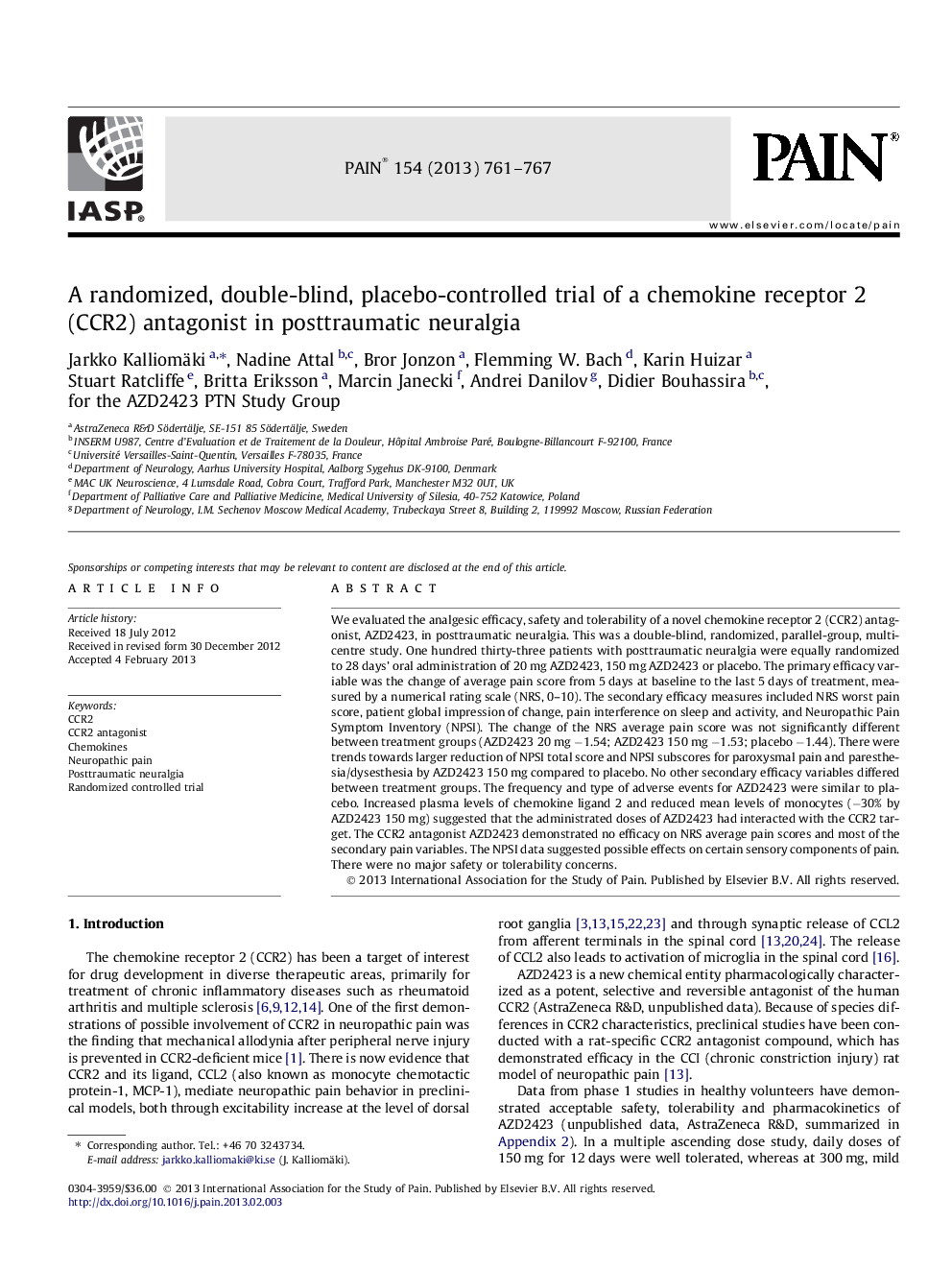| کد مقاله | کد نشریه | سال انتشار | مقاله انگلیسی | نسخه تمام متن |
|---|---|---|---|---|
| 10450657 | 918365 | 2013 | 7 صفحه PDF | دانلود رایگان |
عنوان انگلیسی مقاله ISI
A randomized, double-blind, placebo-controlled trial of a chemokine receptor 2 (CCR2) antagonist in posttraumatic neuralgia
دانلود مقاله + سفارش ترجمه
دانلود مقاله ISI انگلیسی
رایگان برای ایرانیان
کلمات کلیدی
موضوعات مرتبط
علوم زیستی و بیوفناوری
علم عصب شناسی
علوم اعصاب سلولی و مولکولی
پیش نمایش صفحه اول مقاله

چکیده انگلیسی
We evaluated the analgesic efficacy, safety and tolerability of a novel chemokine receptor 2 (CCR2) antagonist, AZD2423, in posttraumatic neuralgia. This was a double-blind, randomized, parallel-group, multicentre study. One hundred thirty-three patients with posttraumatic neuralgia were equally randomized to 28Â days' oral administration of 20Â mg AZD2423, 150Â mg AZD2423 or placebo. The primary efficacy variable was the change of average pain score from 5Â days at baseline to the last 5Â days of treatment, measured by a numerical rating scale (NRS, 0-10). The secondary efficacy measures included NRS worst pain score, patient global impression of change, pain interference on sleep and activity, and Neuropathic Pain Symptom Inventory (NPSI). The change of the NRS average pain score was not significantly different between treatment groups (AZD2423 20Â mg â1.54; AZD2423 150Â mg â1.53; placebo â1.44). There were trends towards larger reduction of NPSI total score and NPSI subscores for paroxysmal pain and paresthesia/dysesthesia by AZD2423 150Â mg compared to placebo. No other secondary efficacy variables differed between treatment groups. The frequency and type of adverse events for AZD2423 were similar to placebo. Increased plasma levels of chemokine ligand 2 and reduced mean levels of monocytes (â30% by AZD2423 150Â mg) suggested that the administrated doses of AZD2423 had interacted with the CCR2 target. The CCR2 antagonist AZD2423 demonstrated no efficacy on NRS average pain scores and most of the secondary pain variables. The NPSI data suggested possible effects on certain sensory components of pain. There were no major safety or tolerability concerns.
ناشر
Database: Elsevier - ScienceDirect (ساینس دایرکت)
Journal: PAIN® - Volume 154, Issue 5, May 2013, Pages 761-767
Journal: PAIN® - Volume 154, Issue 5, May 2013, Pages 761-767
نویسندگان
Jarkko Kalliomäki, Nadine Attal, Bror Jonzon, Flemming W. Bach, Karin Huizar, Stuart Ratcliffe, Britta Eriksson, Marcin Janecki, Andrei Danilov, Didier Bouhassira, for the AZD2423 PTN Study Group for the AZD2423 PTN Study Group,